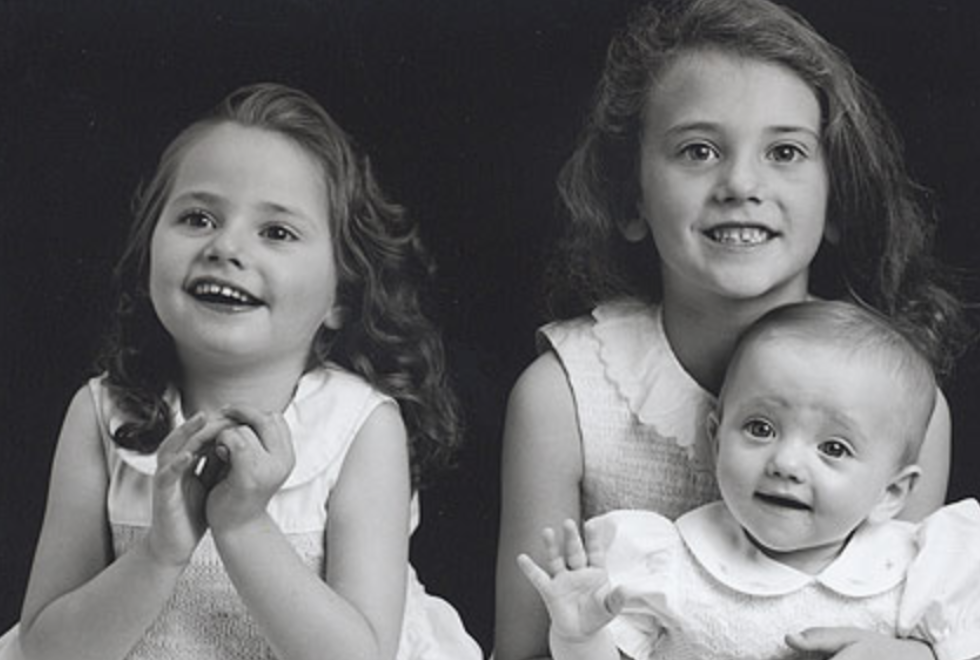
The first six months of a baby’s life are full of firsts. First smile, first crawl, and sometimes even a first word.
But after the six month mark, a small group of babies will not continue their firsts. In fact, their skills will regress, including the loss of their mobility and language. Christine Varon, a bay area mother of three, witnessed her second daughter, Sarah, experience this.
“Imagine: you, your husband or wife and two daughters have an idyllic marriage and family… Then one day, the baby girl starts developing problems… You are powerless to do anything other than love them completely, speak with all of the doctors, learn all you can about Rett Syndrome, and begin physical, augmentative, and occupational therapy. Even then, the therapy may offer little because they may regress to the point where they lose the ability to move their legs, coordinate their hands well enough to eat or even tell you that they love you. You will call and speak with anybody who offers a faint hope or promise of a cure. You will realize there is no cure and slowly learn to accept it, but not without a fight,” Christine and her husband, Sol, share on the website they created for Sarah’s story.
Rett Syndrome, which affects less than 1,000 each year, is a genetic mutation primarily in girls that affects brain development. The syndrome was first discovered in 1966 by Andreas Rett, however, there remains no cure. Most patients affected by Rett will be struck by their second birthday and eventually lose all verbal skills. 80% will experience seizures, and about half are unable to walk. “When I found out, it was devastating,” Christine reflected on Sarah’s Rett Syndrome diagnosis. “I can remember saying, ‘look, if I need to learn some spiritual lesson, then bring it on. But why this little, sweet, innocent girl?’”
Sarah, who is now 15 years old, attends Galileo High School and in her free time loves to swim and listen to music, especially if it’s by Ed Sheeran. In a 2003 interview, her father Sol shared, “I see through her eyes. I just see this incredible, wonderful person.” Sarah stopped crawling at around 11 months and experienced her first seizure-like episode at just 1 years old. Unfortunately, she remains non-verbal and cannot walk on her own.Sarah grew up with her parents in San Francisco, along with older sister Alex and younger sister Lilly. “Knowing that I’ll be in college next year, I almost wish I could take her essence with me everywhere I go,” her older sister, Alex, now 18, describes, “When I think of her, she represents grace. Growing up with her, I’ve learned that stupid problems that go on at school or in my social life don’t matter. She doesn’t deal with any of that, yet she lives with issues that would leave me completely broken. She is still so happy and down to earth.”
Rett Syndrome is extremely rare and therefore exposure is essential in addressing the need for a cure. Though progressions have been made in physical therapy and technological advancements in devices that can help patients communicate,support for research is crucial. The cause of Rett Syndrome, a mutation in the MECP2 gene which lies on the X chromosome, was discovered by Drs. Huda Y. Zoghbi and Uta Francke in 1999. The mutation itself is inherited in only 5% of Rett Syndrome cases, the rest being completely random. Additionally, due to its fairly recent worldwide recognition, Rett Syndrome was previously often misdiagnosed as cerebral palsy and autism as they share similar symptoms of lack of mobile and speech ability. Dedicated researchers are teaming up to learn more and search for effective treatments, however, they are in need of funding to do so. Francke shares, “Supporting their research will speed up the process and increase the chances that our dream of a cure will become a reality in our lifetime.” Zoghbi also affirms, “It is through research that we will be able to find effective treatments that will release all of these beautiful children from their disability.”Donations for research can be made through the Sarah Varon Foundation and the International Rett Syndrome association. “It’s just so rare,” Alex adds, “spreading awareness is key.” Sol & Christine also share on Sarah’s site, “Our single purpose is to find a cure for Rett Syndrome, which may be the Rosetta Stone for many other neurological conditions. In speaking with Drs. Huba Zoghbi and Uta Francke, Rett Syndrome gene co-discoverers… the belief and hope is that a cure for Rett Syndrome will be found.” Please visit www.sarahvaronfoundation.org or www.rettsyndrome.org to learn more and support those who live with Rett Syndrome.
“It’s given me this purpose now,” Christine said on the race for a cure, “I’ll never have to worry about what I’m going to do with my life now… This is it.”






